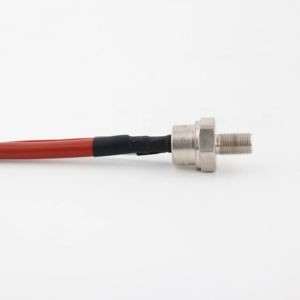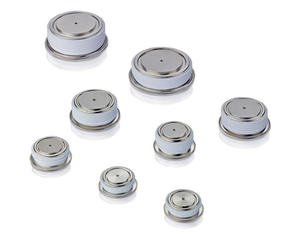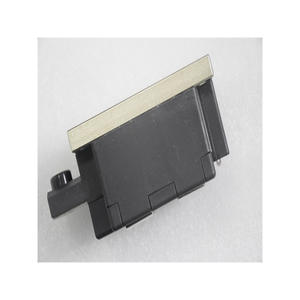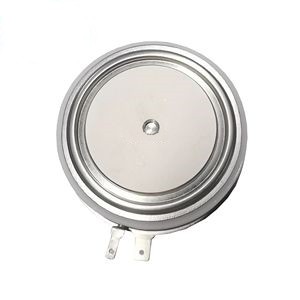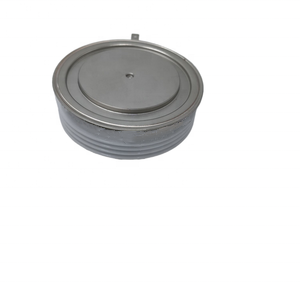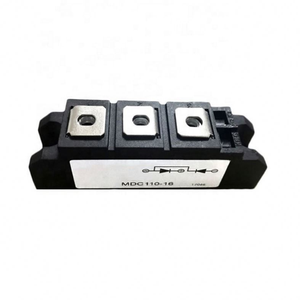Thyristors Online | High-Quality Power Semiconductors
PRODUCT PARAMETERS
Description
Overview of Rectifier Diodes
Rectifier diodes are semiconductor devices used primarily for converting alternating current (AC) into direct current (DC). They allow current to flow easily in one direction while blocking it in the opposite direction. This unidirectional property makes them essential components in power supplies, signal processing, and various electronic circuits. Rectifier diodes can handle a wide range of currents and voltages, making them versatile for numerous applications.
Features of Rectifier Diodes
Unidirectional Conductivity: Facilitates current flow in one direction only, effectively blocking reverse current.
High Current Handling: Designed to carry substantial forward currents, suitable for high-power applications.
Peak Inverse Voltage (PIV): Can withstand high reverse voltages without breaking down.
Low Forward Voltage Drop: Minimizes energy loss as heat, improving efficiency.
Fast Recovery Time: Quickly transitions from conducting to non-conducting states, beneficial for high-frequency applications.
Thermal Stability: Maintains performance across a broad temperature range, ensuring reliability in varying conditions.
Compact Size: Small form factor facilitates integration into compact electronic designs.
Cost-Effective: Provides an economical solution for AC-to-DC conversion needs.
Variety of Packages: Available in multiple packaging options to fit different mounting requirements.
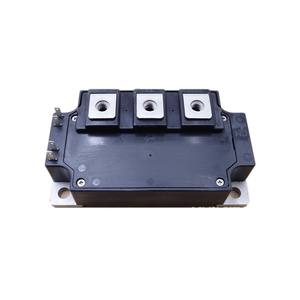
(Tower Crane Parts Bridge Rectifier diode)
Specification of Tower Crane Parts Bridge Rectifier diode
The bridge rectifier diode for tower crane parts converts alternating current (AC) to direct current (DC) in crane control systems. It ensures stable power supply for motors, brakes, and electronic components. The diode handles high voltage and current levels common in industrial machinery. Its design prioritizes durability under harsh conditions like temperature shifts, dust, and vibration.
The diode operates within a voltage range of 50V to 1000V. It supports current capacities from 10A to 50A. These specs match the demands of tower crane operations. The component uses high-grade silicon material for efficient energy conversion. This reduces heat generation during prolonged use. Thermal management features include built-in heat sinks or mounting options for external cooling.
The rectifier’s structure includes four diodes in a bridge configuration. This setup allows full-wave rectification. It ensures minimal energy loss compared to half-wave alternatives. The compact size fits standard control panels without requiring extra space. Installation uses screw terminals or soldering for secure connections. Maintenance is simple due to the diode’s rugged casing. It resists corrosion from moisture or chemicals in construction environments.
Safety features prevent reverse polarity and overload damage. Fast response times protect circuits from voltage spikes. The diode complies with industry standards like ISO and CE. Testing includes load cycling, thermal shock, and vibration resistance checks. These tests confirm reliability in real-world crane operations.
Applications cover tower crane power units, hoisting mechanisms, and rotation controls. The diode ensures smooth operation of AC motors by delivering steady DC power. It also stabilizes signals in sensor systems. Compatibility extends to older crane models and modern automated systems.
Benefits include extended service life and reduced downtime. The diode’s robust construction minimizes wear from mechanical stress. Replacement intervals are longer compared to standard rectifiers. Cost efficiency comes from lower energy waste and maintenance needs.
Suppliers offer custom configurations for specific crane models. Options include higher current ratings or specialized coatings for extreme climates. Technical support assists with integration into existing setups. Bulk orders are available for large-scale construction projects.
The bridge rectifier diode is a critical component for crane performance. Its design focuses on reliability, safety, and adaptability. Proper selection ensures consistent power delivery in demanding lifting operations.
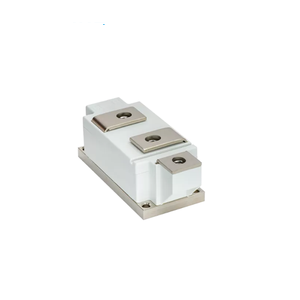
(Tower Crane Parts Bridge Rectifier diode)
Applications of Tower Crane Parts Bridge Rectifier diode
Tower crane parts rely on bridge rectifier diodes to function properly. These diodes convert alternating current (AC) to direct current (DC). Tower cranes need stable DC power for smooth operation. Control systems use this power to manage movements like lifting and rotating. Without reliable conversion, signals might become unstable, risking operational errors.
Bridge rectifier diodes ensure motors receive consistent DC voltage. Motors drive the crane’s mechanical actions, such as hoisting loads. Fluctuating power could cause jerky movements or overheating. The diodes prevent this by maintaining steady voltage. This stability extends the motor’s lifespan and reduces maintenance costs.
Safety systems in tower cranes depend on these diodes. Limit switches and overload protectors require precise DC power. Accurate signals help stop operations when weight limits are exceeded. Malfunctioning diodes might delay safety responses, increasing accident risks. Reliable rectifiers keep safety mechanisms responsive.
Communication devices on cranes use rectified DC power. Sensors and remote controls send real-time data to operators. Clear signals prevent miscommunication during complex tasks. Unstable power could disrupt data transmission, leading to delays. Diodes ensure uninterrupted communication for efficient coordination.
Emergency braking systems need immediate power to activate. Bridge rectifiers provide instant DC supply during power cuts. This prevents uncontrolled movements if the main power fails. Quick response protects both equipment and personnel.
Durability matters in harsh construction environments. Bridge rectifier diodes withstand vibrations, temperature changes, and dust. Robust construction minimizes breakdowns. Regular inspections help identify worn diodes early. Replacing them promptly avoids unexpected downtime.
Operators benefit from reduced energy waste. Efficient conversion lowers heat generation, saving power. Stable voltage also cuts energy loss in circuits. Over time, this efficiency lowers operational costs.
Bridge rectifier diodes are small but critical. Their role in power conversion impacts every crane function. Choosing high-quality diodes ensures reliability. Proper installation and maintenance keep cranes running safely.
Company Profile
PDDN Photoelectron Technology Co., Ltd.(sales@pddn.com) is one of the leading enterprises in power electronics technology and power products, which is fully involved in developing solar inverters, transformers, voltage regulators, distribution cabinets, thyristors, modules, diodes, heaters, and other electronic devices or semiconductors. We will be committed to providing users with high-quality, efficient products and considerate service.
It accepts payment via Credit Card, T/T, West Union, and Paypal. PDDN will ship the goods to customers overseas through FedEx, DHL, by sea, or by air. If you want high-quality Tower Crane Parts Bridge Rectifier diode, please send us inquiries; we will be here to help you.
Payment Methods
L/C, T/T, Western Union, Paypal, Credit Card etc.
Shipment
By sea, by air, by express, as customers request.
Storage Conditions
1) Store in a dry environment at room temperature.
2) Avoid damp and high temperature.
3) Use immediately after opening the inner packing bag.
5 FAQs of Tower Crane Parts Bridge Rectifier diode
What is a bridge rectifier diode in a tower crane?
A bridge rectifier diode converts alternating current (AC) to direct current (DC). Tower cranes need DC power for smooth operation of motors and control systems. This part ensures the electrical system works correctly by stabilizing the power supply.
Why is the bridge rectifier diode important?
It maintains consistent power flow to the crane’s critical components. Without it, electrical systems might fail or perform unreliably. The diode prevents voltage spikes and protects sensitive equipment from damage. Regular checks are necessary to avoid crane downtime.
What are signs of a failing bridge rectifier diode?
Common signs include flickering lights, erratic motor behavior, or unresponsive controls. Overheating or burning smells near electrical panels may also indicate issues. Immediate inspection is needed if these symptoms appear to prevent further damage or safety risks.
How often should bridge rectifier diodes be maintained?
Inspect diodes every six months or after heavy use. Clean dust and debris around the diode to prevent overheating. Test voltage output during routine maintenance. Replace the diode if tests show inconsistent readings or physical wear.
Can a damaged bridge rectifier diode be replaced easily?
Replacement requires basic electrical knowledge. Always disconnect power before handling the diode. Match the new diode’s specifications to the original part. Incorrect voltage or current ratings may cause system failures. Consult a technician if unsure about the process.
How do I choose the right bridge rectifier diode?
Check the crane’s manual for voltage and current requirements. Ensure the diode’s ratings exceed the system’s maximum load. Buy from reputable suppliers to guarantee quality. Verify compatibility with your crane model to avoid installation issues.
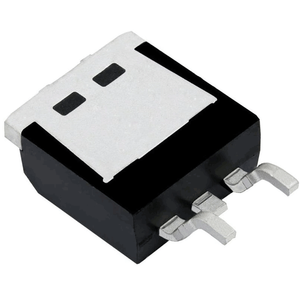
(Tower Crane Parts Bridge Rectifier diode)

